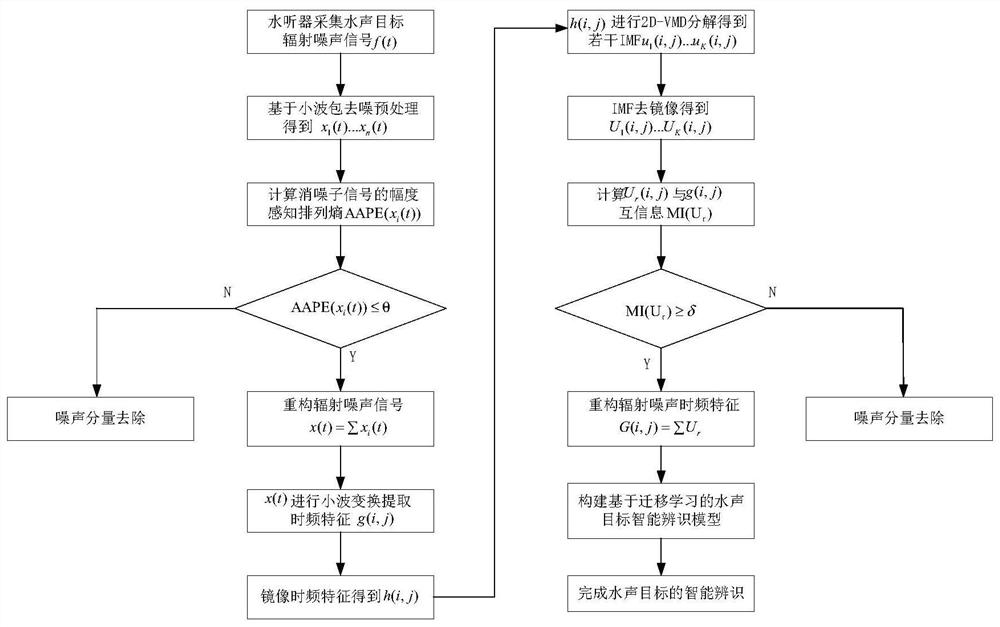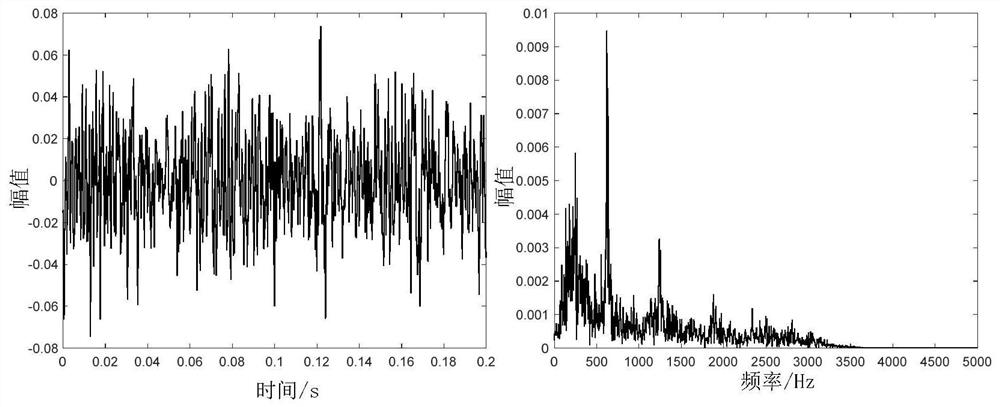Method for identifying target in water
An identification method and a technology for underwater targets, which are applied in the field of underwater acoustic signal processing, and can solve the problems of not meeting the high efficiency of underwater target identification, difficult and accurate classifiers, and incomplete expression information.
- Summary
- Abstract
- Description
- Claims
- Application Information
AI Technical Summary
Problems solved by technology
Method used
Image
Examples
Embodiment Construction
[0082] The present invention is described in further detail below in conjunction with accompanying drawing:
[0083] Such as figure 1 As shown, a method for underwater target recognition includes the following steps:
[0084] Step 1), utilize the hydrophone to collect the original signal f(t) of the radiated noise of the underwater acoustic target, where t is the time independent variable;
[0085] Step 2), use the wavelet packet decomposition method to divide the original signal f(t) of underwater acoustic target radiation noise into n sub-signals, and denoise them by wavelet threshold, and obtain the sub-signal x after denoising 1 (t)...x n (t);
[0086] Step 3), calculate the sub-signal x after denoising 1 (t)...x n Amplitude Perceptual Permutation Entropy AAPE(x i (t)) (i=1, 2...n), choose to satisfy the amplitude perceptual permutation entropy AAPE(x i (t))≤θ sub-signal reconstructed radiation noise signal θ is the set threshold, which is used to measure the degr...
PUM
 Login to View More
Login to View More Abstract
Description
Claims
Application Information
 Login to View More
Login to View More - R&D
- Intellectual Property
- Life Sciences
- Materials
- Tech Scout
- Unparalleled Data Quality
- Higher Quality Content
- 60% Fewer Hallucinations
Browse by: Latest US Patents, China's latest patents, Technical Efficacy Thesaurus, Application Domain, Technology Topic, Popular Technical Reports.
© 2025 PatSnap. All rights reserved.Legal|Privacy policy|Modern Slavery Act Transparency Statement|Sitemap|About US| Contact US: help@patsnap.com



